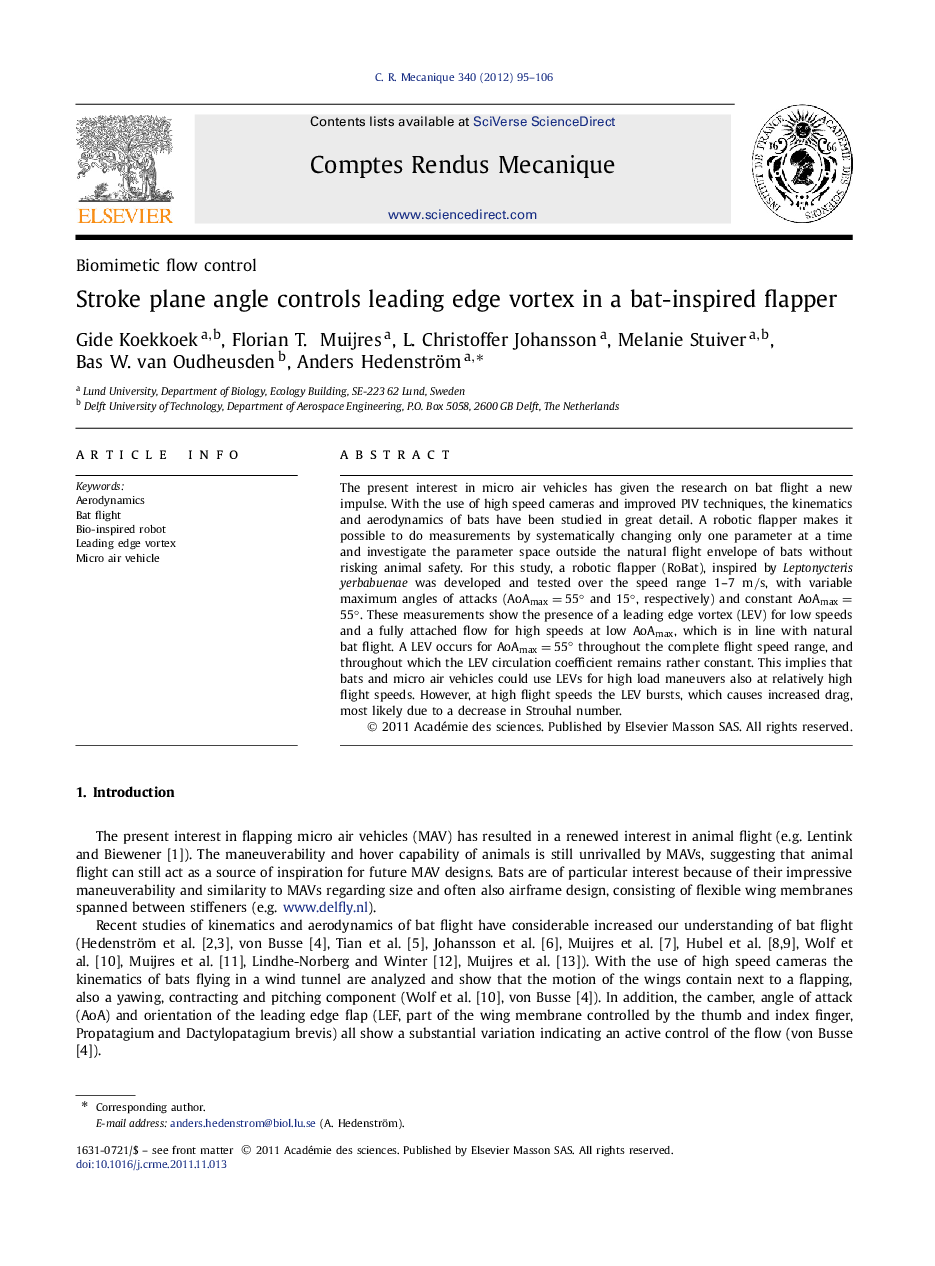| Article ID | Journal | Published Year | Pages | File Type |
|---|---|---|---|---|
| 823916 | Comptes Rendus Mécanique | 2012 | 12 Pages |
The present interest in micro air vehicles has given the research on bat flight a new impulse. With the use of high speed cameras and improved PIV techniques, the kinematics and aerodynamics of bats have been studied in great detail. A robotic flapper makes it possible to do measurements by systematically changing only one parameter at a time and investigate the parameter space outside the natural flight envelope of bats without risking animal safety. For this study, a robotic flapper (RoBat), inspired by Leptonycteris yerbabuenae was developed and tested over the speed range 1–7 m/s, with variable maximum angles of attacks (AoAmax=55°AoAmax=55° and 15°, respectively) and constant AoAmax=55°AoAmax=55°. These measurements show the presence of a leading edge vortex (LEV) for low speeds and a fully attached flow for high speeds at low AoAmaxAoAmax, which is in line with natural bat flight. A LEV occurs for AoAmax=55°AoAmax=55° throughout the complete flight speed range, and throughout which the LEV circulation coefficient remains rather constant. This implies that bats and micro air vehicles could use LEVs for high load maneuvers also at relatively high flight speeds. However, at high flight speeds the LEV bursts, which causes increased drag, most likely due to a decrease in Strouhal number.
